About Me
Hi there! I’m Samantha Scibelli, a Jansky Postdoctoral Fellow at the National Radio Astronomy Observatory (NRAO) in Charlottesville, VA. I am interested in the broader topics of star formation, astrochemistry, and radio astronomy. I primarily use millimeter and submillimeter telescopes (such as the ARO 12m, IRAM 30m, Yebes 40m, GBT, and ALMA) to probe the origins of organic chemistry, the basis for life on Earth, at the earliest stages of star and solar system formation, in dense molecular cores. See my Current Research Interests, download my CV, and follow me on ResearchGate!
Before my start at NRAO, I completed my PhD as a NSF Graduate Research Fellow in the Department of Astronomy and Steward Observatory at the University of Arizona. During my thesis I focused on constraining the physical, kinematic, and chemical structure of low-mass starless and prestellar cores to better understand their evolution.
In my free time I enjoy cuddling with my cat, Tabatha, going for hikes, cooking new recipes and reading popular science books. Passionate about science writing myself, I also completed a Science Communications Certificate at the University of Arizona. A short memoir, describing my early childhood and how I got interested in astronomy, has been published online at terrian.org. I’ve written science articles on the hidden secrets of local squirrels in The Daily Wildcat, and another on how satellite communication networks will negatively affect radio astronomy in the Green Valley News.
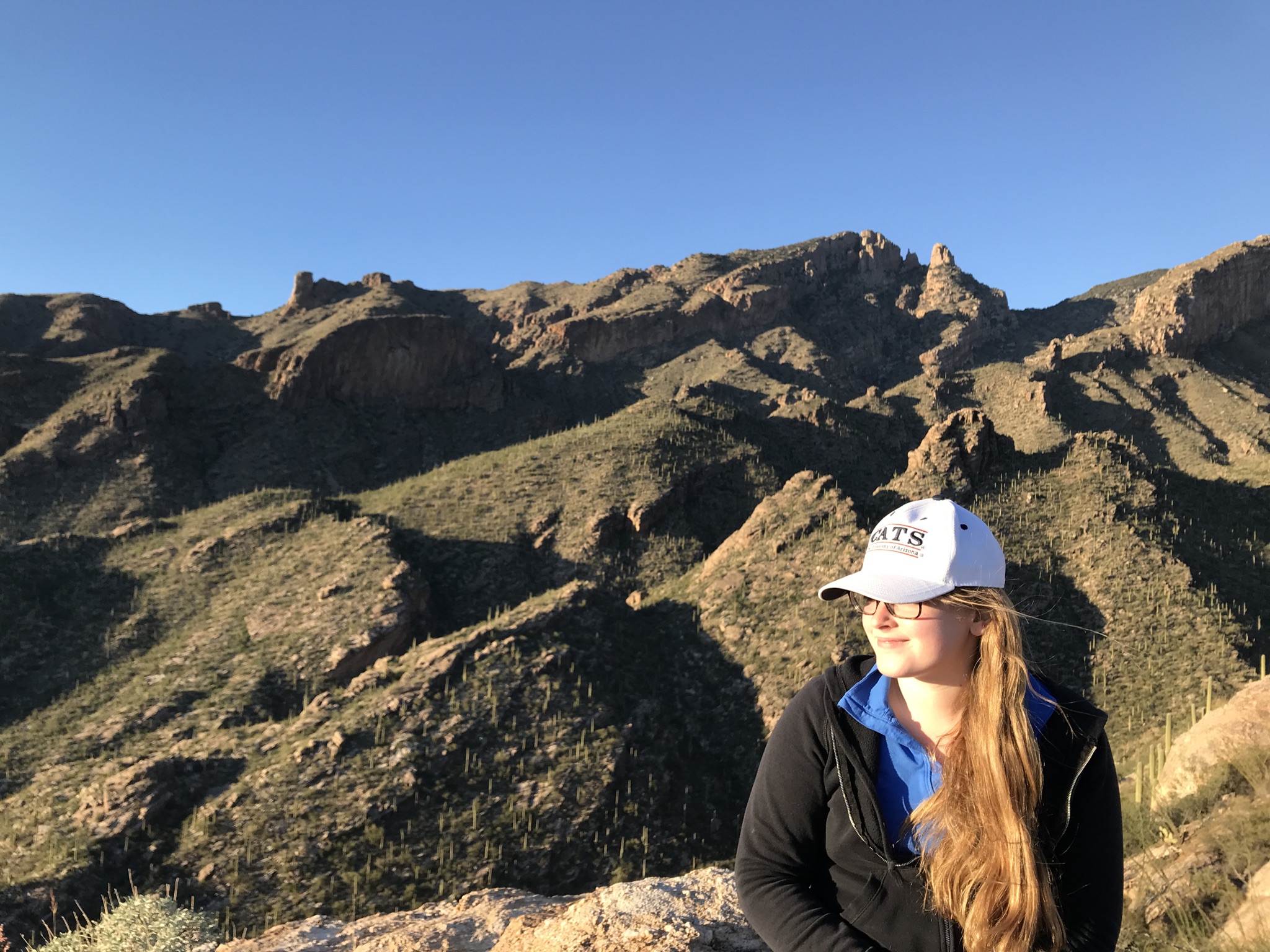
Current Research Interests
Deuteration Traces Nascent Complex Organic Chemistry in IRAS 16293E
In my most recent study (Scibelli, et al., 2025b) we look into the early presence of complex organic molecules or COMs (carbon-bearing with six or more atoms) in the prestellar core IRAS 16293E, which is a dense nursery of gas and dust that will eventually collapse to create a star like our Sun. It is still debated how much of the COM inventory is inherited to the next stages of star and planet formation, and so COMs with deuterium (the heavier hydrogen) can better probe chemical histories throughout the different stages because the degree of deuteration is ‘locked in’ early during the prestellar stage. We find striking similarities between relative molecular ratios and D/H values of singly deuterated and doubly deuterated methanol (CH2DOH and CHD2OH, respectively) when comparing IRAS 16293E to the nearby A and B protostars, as well as to a heterogeneous sample of other prestellar cores, protostars, and the comet 67P/Churyumov-Gerasimenko! Our results strongly support the idea of COM inheritance from the prestellar to protostellar phase!
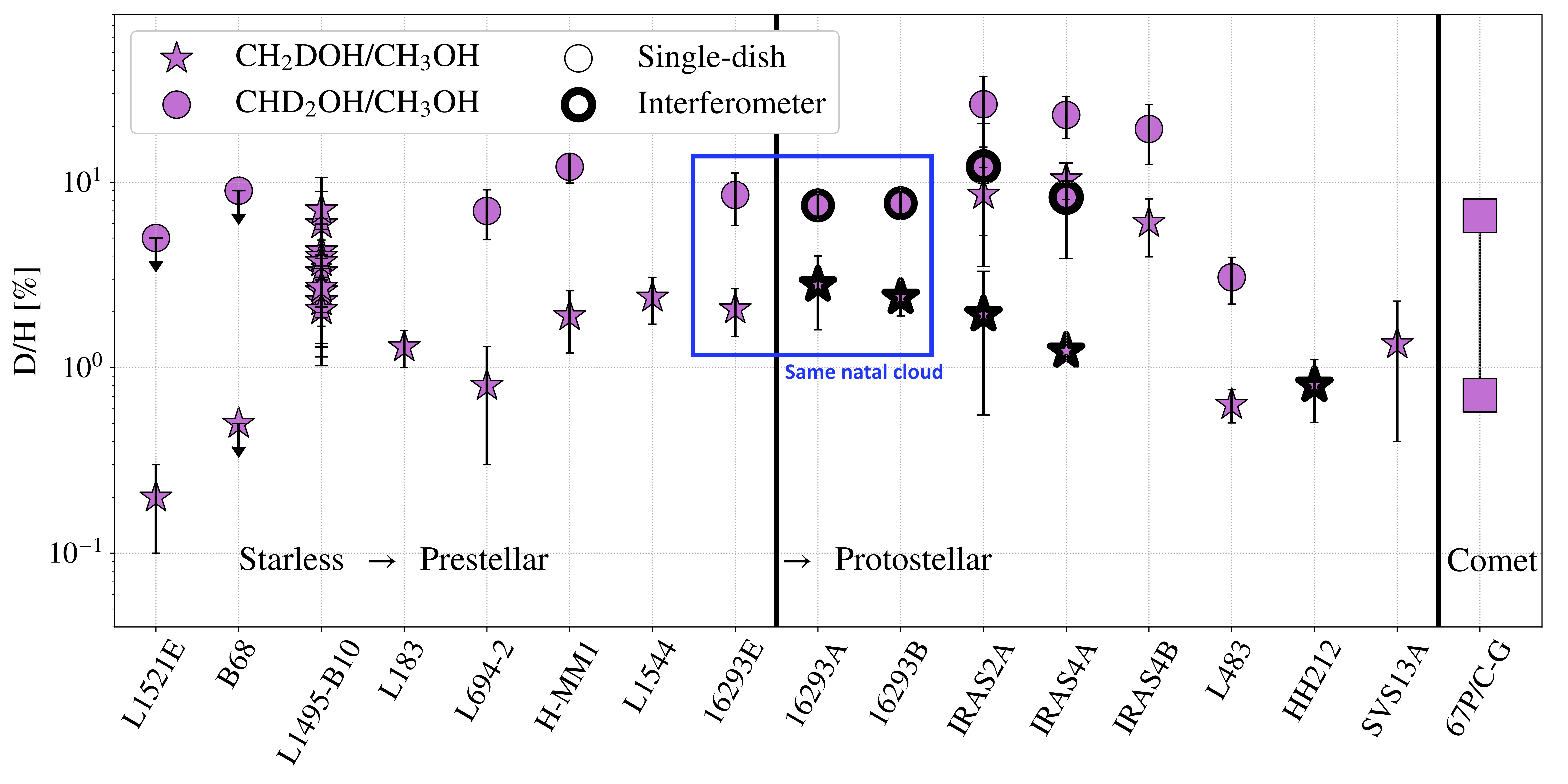
Adapted from (Scibelli, et al., 2025b)
Precursor Prebiotic Chemistry in the Perseus Molecular Cloud
A large multi-source survey in the Perseus Molecular Cloud using both the ARO 12m telescope and the Yebes 40m telescope found a prevalence of complex organic molecules (COMs) in the majority of starless and prestellar cores targeted. Detections of formic acid, t-HCOOH, ketene, H2CCO, methyl cyanide, CH3CN, methanol, CH3OH, acetaldehyde, CH3CHO, vinyl cyanide, CH2CHCN, methyl formate, HCOOCH3 , and dimethyl ether, CH3OCH3, are seen in at least 20% of the cores. Our findings have more than doubled COM detection statistics in cold (10K) cores! Check out this Astrochem Podcast Episode to learn more!
The survey paper (Scibelli et al., 2024) has also led to numerous follow-up projects, including:
Comparisons to MHD simulated cores coupled with a time-dependent gas-grain model, which produce similar COM abundances (for CH3OH and CH3CN) to our observations (Priestley et al., 2025)!
The first detections of biologically relavant phosphorous-bearing molecules PN, PO, and PO+ toward a shocked starless core (Scibelli, et al., 2025a)!
Detections of numerous large carbon-chain species including cyanoplyynes (HCnN) and sulfur-bearing (CnS) carbon-chains (Pokorny-Yadav, Scibelli, et al., in prep)!
Succesive deuteration in COMs as well as the organic carbon-chain species cyclopropenylidene, or c-C3H2 (Ferrer Asensio, Scibelli et al., in prep)!
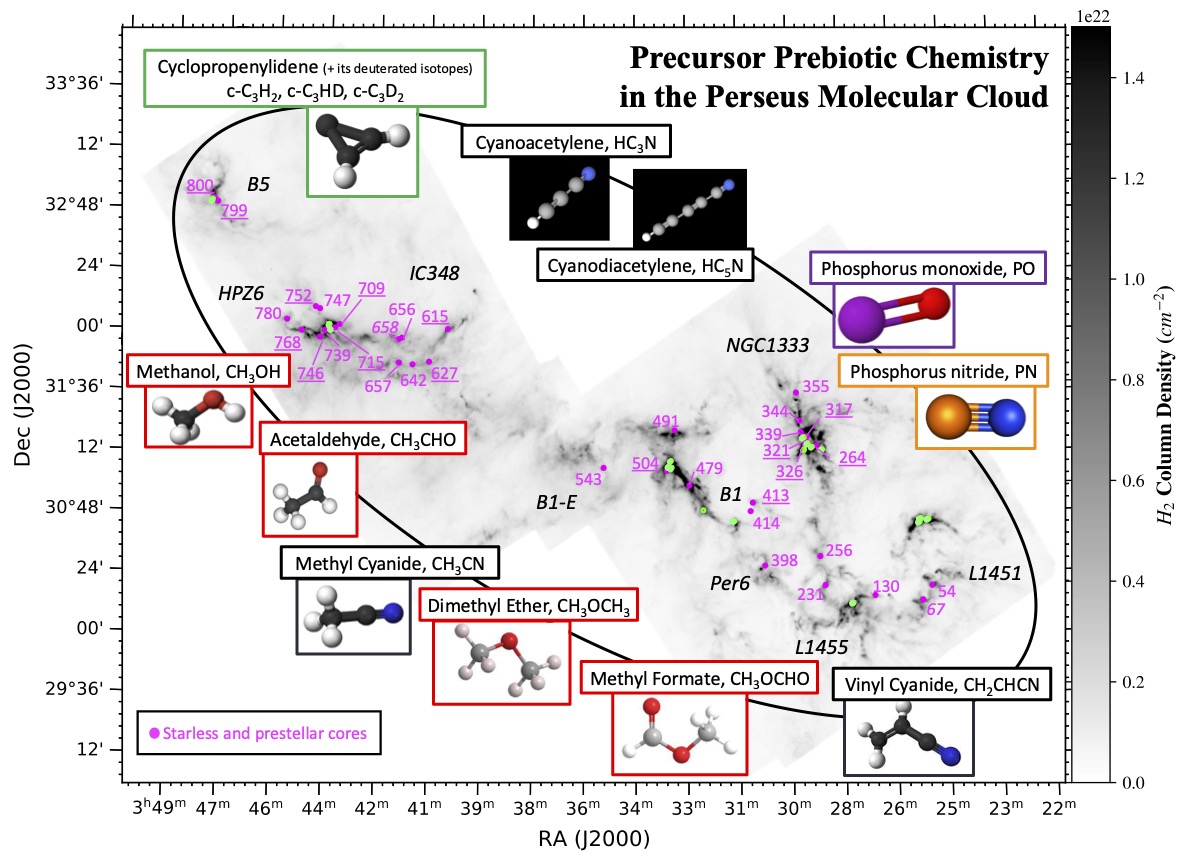
Adapted from Scibelli et al., 2024
3D Radiative Transfer Modeling
I am interested in understanding how starless and prestellar cores evolve by tracing not only their chemistry, but their physical structure. I performed 3D radiative transfer dust modeling with the code RADMC-3D, which was aided by high resolution (12 and 19 arcsecond) dust continuum maps (at 1.2mm and 2.0mm) of the B10 region within the same Taurus L1495 filament pictured below. Constraints were placed on the central densities, density slopes, aspect ratios, dust opacities, and external radiation field strengths for 14 cores embedded within B10. The models were used to assess the stability and evolutionary state of each COM-rich core, which in turn has shed light on the conditions needed for COM chemistry to thrive.
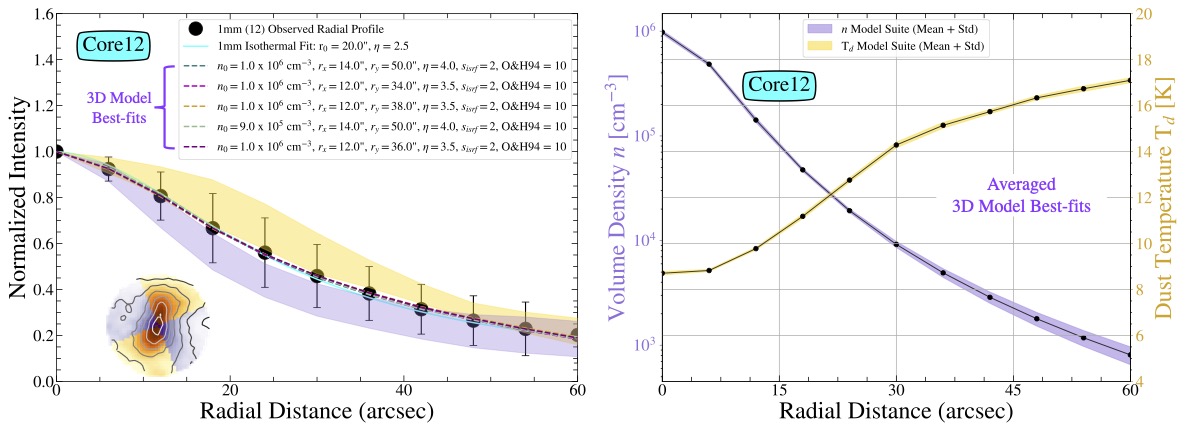
Adapted from Scibelli et al., 2023
Complex Organic Chemistry in Starless and Prestellar Cores in Taurus
During my thesis, I used the ARO 12M radio dish on Kitt Peak to search for complex organic molecules (COMs) in prestellar cores located along the Taurus Molecular Cloud, a filamentary star forming region (shown below). We find that COMs are detectable in the gas phase and are being formed early, at least hundreds of thousands of years prior to star and planet formation (Scibelli & Shirley 2020, Scibelli et al., 2021)! By studying the chemistry within these cores we can better understand their physical properties and evolutionary timescales. [Check out this astrobites article!] & [News Link]
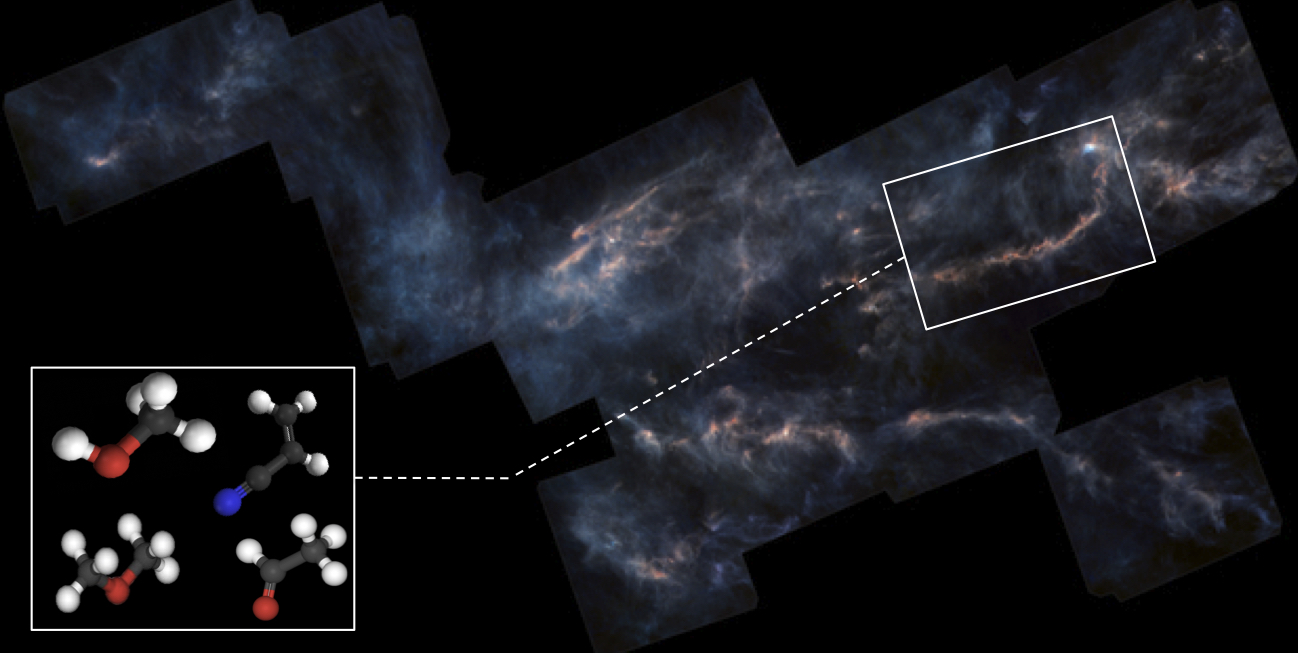
Adapted Herschel Image of the Taurus Molecular Cloud (~135pc away)
Credit: ESA/Herschel/NASA/JPL-Caltech, CC BY-SA 3.0 IGO; Acknowledgement: R. Hurt (JPL-Caltech)
Previous Research Interests
V Hydrae, an AGB star in Transition
As an intern at NASA’s Jet Propulsion Laboratory, I worked on analyzing Hubble Data of the carbon star V Hydrae (V Hya). This unique object provides insight into the nature of the launching mechanism of jet-like outflows that are believed to be the cause of the poorly understood transition phase of AGB stars into aspherical planetary nebulae. [News Link]
Dark Matter and Gravitational Lensing
As an undergraduate physics student at Stony Brook University, I was interested in dark matter and gravitational lensing. My project focused on trying to break the degeneracies between disc and halo contributions in spiral galaxy rotation curves by combining kinematics and lensing. [ADS,arxiv]
Additionally, the summer before I started my undergraduate program, I interned at the Laser Teaching Center in the basement of the physics building at Stony Brook. I worked on understanding the caustic patterns that arise from evaporating water droplets, with the foresight in mind that understanding caustics would help me to formulate a project on gravitional lensing. [Undergrad Research Page]
